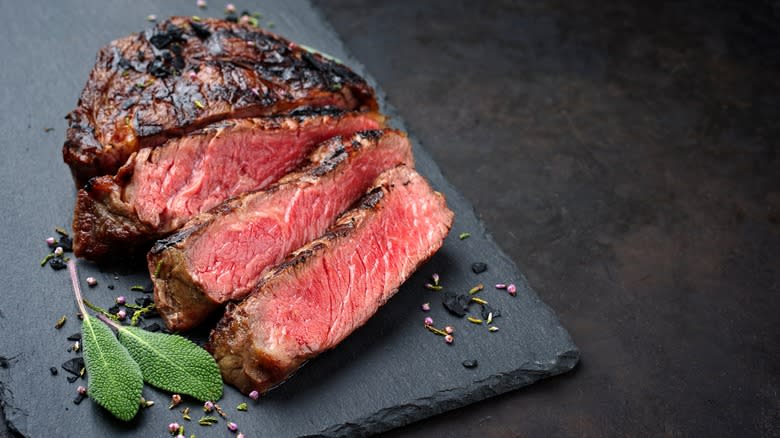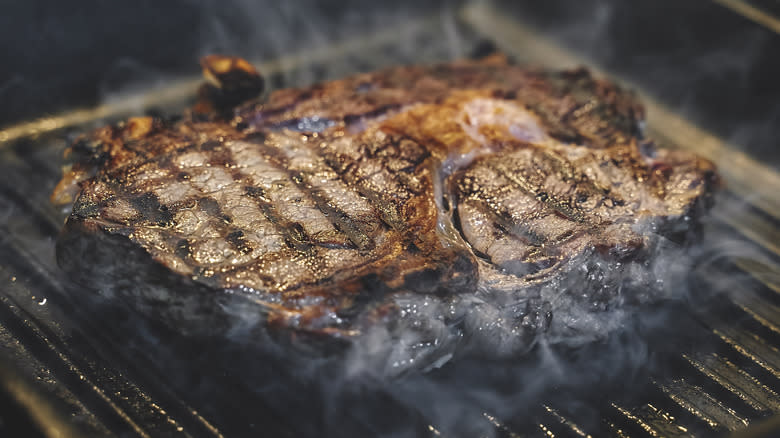Follow This Cooking Method To Prevent A Gray Ring Around Your Steak

It's always a nice bit of serendipity when the method to follow to fix a problem with your steak just so happens to be the best way to cook it, period. Tips for searing steak get a lot of attention from chefs, because if there is one thing you want to nail every aspect of, it's a pricey piece of prime beef. This can extend to larger problems, like making sure your steak stays tender and nailing the exact temperature you need for a perfect medium-rare, but there are smaller issues that are just as vexing and maybe more difficult. One of those is the unfortunate fact that when you sear steak, you tend to develop a gray ring of overcooked, mushy meat under the crust. But if you are following one of the best methods for making steak, the reverse sear, that will cease to be a problem.
The reverse sear was conceived for this exact problem: how do you get a perfectly cooked exterior on your steak without overcooking the inside? The old solution used to be sous-vide, but not everyone has a machine, so this alternative solution was devised. Instead of cooking your steak in a pan or over high heat first and then finishing it in the oven to get the perfect temperature, you reverse the process. Starting in the oven lets the steak come up to temp, and then you can sear so quickly that there is no time for that gray ring to develop.
Read more: Your Guide To The Different Cuts Of Steak
Eliminate Gray Steak With The Reverse Sear Method

The key to the reverse sear is a low roast in the oven that gradually brings your steak up to the desired doneness but doesn't brown it much. Searing your steak from raw doesn't just mean it takes too long to form a crust, thus the gray ring, it also means that there's a much smaller margin for error on nailing the temperature. Because you are dealing with high heat cooking, you can jump from medium-rare to medium to medium-well in a matter of seconds. In an oven with gentle heat (ideally with a thermometer), you know exactly when your steak is ready to sear, and you have several minutes to pull it off. Finally, the heat of the oven also dries out the exterior of the steak as it roasts, which means quicker browning when you sear and a more robust, crackly crust. All wins.
Maybe the best part of the reverse sear is how easy it is. Cooked in a 250 degree Fahrenheit oven, a 1½ inch steak should come to the target temperature for a medium-rare finish in 25 to 30 minutes. Then, you sear it in a little oil over high heat for 45 seconds per side, and you're done. You'll get perfectly cooked, juicy steak with no gray ring, and it's even harder to mess up than a normal sear. If you don't already reverse sear your steaks, you'll never go back after this.
Read the original article on Tasting Table


